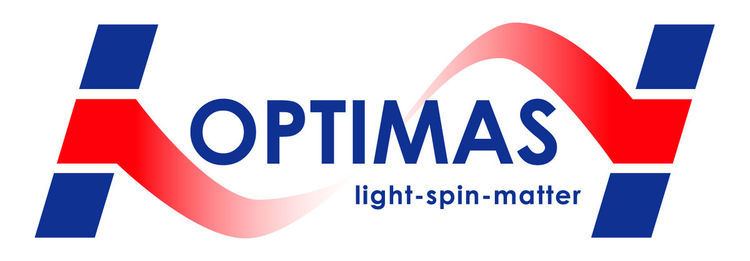 | ||
The State Research Center for Optics and Material Sciences (OPTIMAS) connects two areas of research for which the University of Kaiserslautern has a national and international reputation, founded upon relevant contributions to the development of laser physics, photonics and plasmonics. Researchers in Kaiserslautern have also been prominent in the development of magnetic, electronic and molecular materials, as well as thin films, nanostructures and ultracold quantum gases. In order to continue building on this research foundation, OPTIMAS has been established at TU Kaiserslautern within the framework of the research initiative of the state of Rhineland-Palatinate.
Contents
Research at OPTIMAS
OPTIMAS combines natural and engineering sciences in the research areas of optics and material sciences. The participating researchers bring together their expertise in the areas of
Their multifaceted projects include both fundamental and technologically oriented research, and fall under the general theme of "Light – Spin – Matter". Several OPTIMAS research objectives are thematically extremely broad and can only be pursued through the combination of multiple model-based and experimental approaches. The "Light – Spin – Matter" core unites diverse cutting-edge research areas such as
A typical example of the wide range of OPTIMAS research objectives is Spin Engineering.
This research area includes
Spin engineering also leads to applications, for example in the development of new materials for computer memory and novel sensors.
Members
Research groups from four different departments at TU Kaiserslautern – Physics, Chemistry, Electrical and Computer Engineering, as well as Mechanical and Process Engineering – are members of OPTIMAS. Several additional research centers and institutions are also members:
The balance between theoretical, experimental, and applied research groups is characteristic for the Research Center. Since OPTIMAS is a dynamic research association whose primary research themes are on a path of continuous development, its membership composition is likewise continuously adapting. Most of the scientists of OPTIMAS are in their international scientific community well known due to their publication activity in internationally journals (e.g. Nature, Proceedings of the National Academy of Sciences of the United States of America, Physical Review Letters, Journal of the American Physical Society, Angewandte Chemie, International Edition). The current manager of operations at OPTIMAS is, Professor Martin Aeschlimann.
Transregional Collaborative Research Centers
Under the roof of OPTIMAS five Transregional Collaborative Research Centers (CRC = Sonderforschungsbereich SFB) of the German Science Foundation (DFG) are operated:
In addition, OPTIMAS is associated with the Graduate School of Excellence “Materials Science in Mainz (MAINZ)” which is coordinated by the University of Mainz. This graduate program is financed since 2007 in the framework of the German Universities Excellence Initiative.
Goals of OPTIMAS
The strategic aim of OPTIMAS is to further advance research and education in the interdisciplinary areas of photonics, spintronics, molecular and magnetic functional materials, and nanostructures. OPTIMAS is furthermore actively involved in the appointment of highly acclaimed scientists as well as in the recruitment of young scientists (e.g. Junior Professors). OPTIMAS supports the funding acquisition of its associated research groups by strengthening their research infrastructure, such as by maintaining and upgrading research equipment, and by interdisciplinary networking.
